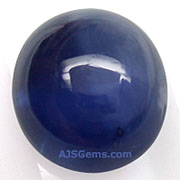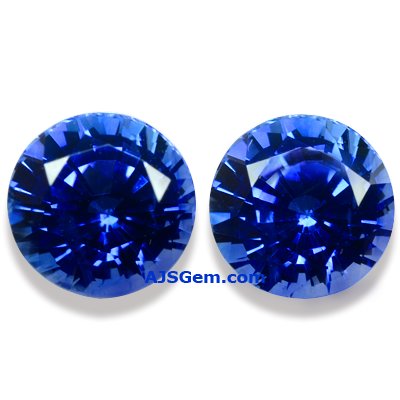 |
| Unheated Ceylon Sapphire |
If you're shopping for a blue sapphire for an engagement ring or special piece of jewelry, you'll discover a wide range of prices from different gem dealers. The price variations can be bewildering at first, particularly since sapphires, unlike diamonds, are not graded according to an internationally recognized system. However, the price of a sapphire should be in direct relationship to the rarity and quality of the stone you are buying. So its important to know how gem dealers price their blue sapphires.
The four "C's" -- color, cut, clarity and carat weight -- apply to sapphires, just as they do to diamonds, though the grading is done in quite a different way for sapphires. There are also other considerations that bear on sapphire prices such as treatment and origin.
 |
| Ceylon Sapphire |
The easiest way to undestand sapphire pricing is to start with some basic grading distinctions: synthetics, cabochons, diffusion treated stones, heated stones and unheated stones.
Synthetic sapphires are real sapphires (aluminum oxide), but they have been created in a laboratory using a technique such as as the Verneuil process (also known as flame fusion). Though these can look attractive and can be created in nearly any color, they have a very low value in the market, literally a few dollars a carat. Synthetic sapphires are mainly used in cheap commercial jewelry and are not offered by any reputable gemstone dealer.
Even lower quality -- though higher priced -- are low grade natural sapphires that are have been fracture-filled with lead glass. These tend to sell for around $25-30 a carat. But these are best avoided at any price, not just because they are remarkably ugly, but also because the lead glass has a tendency to melt when the gem is heated during the setting process.
 |
| Blue Sapphire Cabochon |
Cabochons tend to be the most affordable of the quality natural blue sapphires. A cabochon (or cab, for short) is a stone cut in a dome shape, usually with a flat base, with no facets. Material of good color which is not sufficiently transparent to cut in facets is often used for cabochons. If a sapphire has inclusions of rutile, it may display a star when cut as a cabochon, though most star sapphires are opaque. Good quality non-star sapphire cabochons are usually translucent to transparent, and can be found with strong colors. Since cabochons typically have significant inclusions, they are usually heat treated to improve the color and clarity. High quality blue sapphire cabochons usually sell for around $50 to $500 per carat, depending on size and color.
The least expensive faceted blue sapphires are stones that have been diffusion treated with beryllium to improve the color. This treatment is permanent and requires no special care, but these stones are sold at a significant discount in the market. At one time these diffused stones were quite inexpensive at around $40 to $100 per carat, but with the shortage of blue sapphires prices have risen dramatically on these diffused stones. We have seen diffused Ceylon blue sapphires on offer at under $500 a carat.. At this price there are still heat-treated sapphires available in the market that are a much better buy. Most reputable gem dealers do not deal in diffused blue sapphire.
Most of the high quality blue sapphire in the market has been heat-treated to improve the color and clarity. Unlike diffusion treatment, this is an long accepted practice in the gems business, and well-cut heated stones with excellent color and cut command a premium price in the market. Carat size is an important factor in pricing. Where a very good heated blue sapphire in the 1 carat size may sell for $200 to $600 a carat, with very fine stones in the $800 to $1,200 a carat range, the price per carat increases significantly for larger stones. The prices per carat for 2 carat heated blue sapphire are about double, with very fine stones selling for $1,500 to $2,500 per carat. The same pricing principle holds true for the rare 4 and 5 carat blue sapphires.
 |
| Unheated Burma Sapphire |
Unheated sapphires with excellent color, cut and clarity are the top of the line and much sought after by gem collectors. You'll often read that unheated sapphires are very rare. This is not strictly true, since all sapphires from the mine are originally unheated. But the fact is that most blue sapphires require heat treatment to reach their full potential. There are many unheated sapphires in the market that have mediocre color. We have seen quite a lot of Tanzanian blue sapphire, for example, that is so pale in color that it is not worth even the fairly modest prices being asked for it. In this case a heated stone of fine color is a much better buy. But well cut unheated sapphires in a rich blue do exist. They are so rare that it is difficult to generalize about prices. Depending on size, prices can vary from $2,000 to $10,000+ per carat. The record price at auction was slightly over 3 million dollars for a 22.66 carat Kashmir sapphire that was sold by Christie's in New York in 2007. So for the moment we can say that $135,000 per carat is the top price for blue sapphire.
Prices on rare gemstones generally rise over time, and sometimes they can rise quite rapidly when supply is tight and demand is particularly strong. So the prices cited in this article are estimates and you may already find blue sapphires offered at higher prices.
